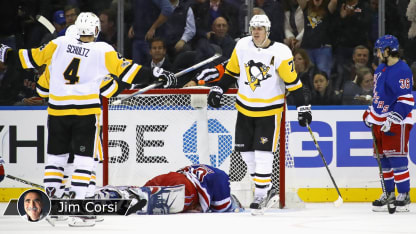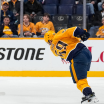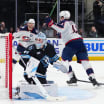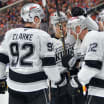That was an unscripted play in the offensive zone, and the Penguins gained access to the net. The scripted play would be, after losing the face-off, to peel back, play 3-on-3, but they're just thinking, 'We're going to find a way to score and if we don't, well, we'll see what happens.'
A 5-on-5 example happened in the San Jose Sharks' 5-2 win against the Montreal Canadiens on Tuesday.
Sharks forward Kevin Labanc was the shooter at the right point because Brent Burns, the defenseman, was down below the goal line before coming up the wall to get him the puck. We see defensemen doing that a lot now, abandoning the blue line to go lower in the zone.
These players, the defensemen especially, are thinking that they don't have to be the high guy, the safety valve. They're thinking about scoring goals too and you're seeing defensemen lingering around the hash marks. It's like, 'If we get it, we score. If we don't, it's a 2-on-1. Hey, whatever, my speed will get it back. I'm not exposed.'
They're taking a risk to help their team get a better chance to own the net-front area and create chaos for the team defending, especially since the fourth man in the rush is staying in the play.
Well, Labanc shot into traffic at the front of the net, and the puck ricocheted off three players and the ice before going into the net.
The Sharks had net accessibility and scored off an unscripted play in the offensive zone because Burns went low to help get the puck high and it opened just enough room in front of Montreal goalie Carey Price.


















